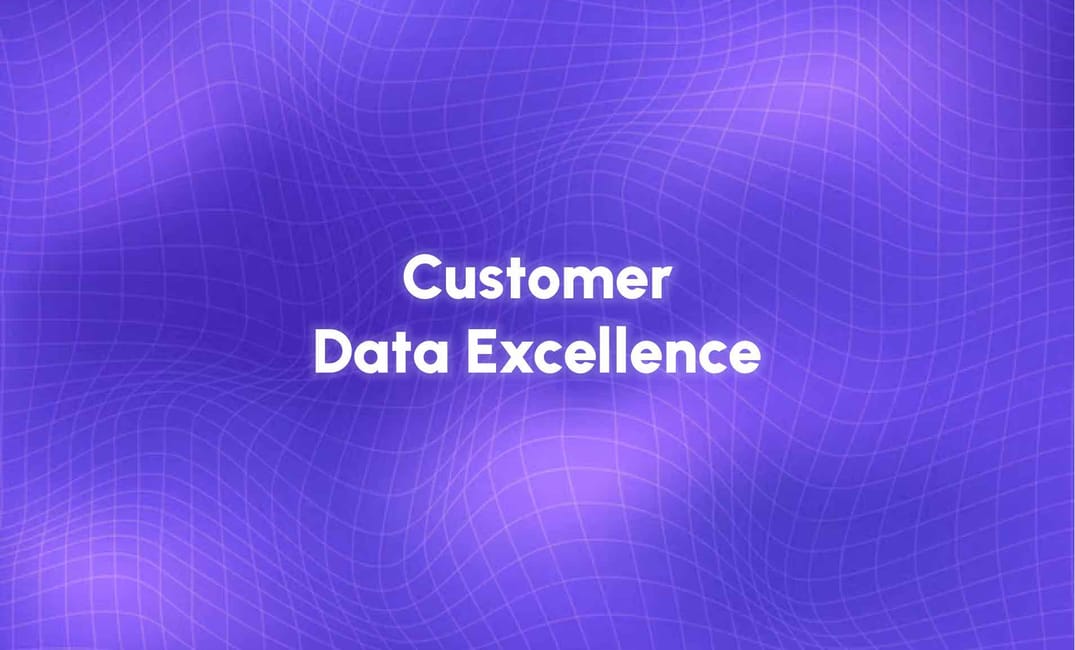Introduction
The exponential growth of digital interactions has resulted in unprecedented volumes of customer data. Despite this abundance, organizations frequently encounter the challenge of data fragmentation, with information sequestered within disparate systems and tools. Such silos not only hinder strategic decision-making but also obstruct efforts to provide cohesive customer experiences. Addressing these limitations requires a transformative approach: the pursuit of customer data maturity.
Customer data maturity extends beyond technological enhancements; it represents a strategic paradigm. By developing an ecosystem where data is unified, accessible, and actionable, organizations can foster personalized interactions, implement predictive analytics, and drive sustainable growth. This article delineates the foundational principles and actionable steps necessary to navigate the complexities of customer data maturity.
Defining Customer Data Maturity
Customer data maturity encapsulates an organization’s capacity to systematically collect, harmonize, and operationalize customer data. This progression encompasses several stages, evolving from rudimentary data aggregation to sophisticated analytics and real-time insights. Organizations achieving advanced maturity levels can:
- Engineer context-aware, personalized customer interactions at scale.
- Synchronize cross-departmental efforts through an authoritative, unified data source.
- Enhance decision-making velocity by leveraging real-time data streams.
Achieving data maturity necessitates a synthesis of technological investment, process reengineering, and cultural adaptation. Organizations must cultivate an infrastructure that not only facilitates data fluidity but also translates this fluidity into measurable business value.
Challenges Posed by Data Silos
Fragmented data ecosystems pose significant barriers to deriving meaningful insights and delivering value-driven customer engagements. Key challenges include:
- Heterogeneous Tools and Platforms: Disparate systems such as CRMs, marketing automation platforms, and analytics suites operate in isolation, creating data silos.
- Identifier Inconsistencies: Varying methodologies for customer identification across departments result in duplicate or incomplete data profiles.
- Compliance and Risk Exposure: Fragmented data systems amplify the complexity of adhering to regulatory mandates such as GDPR and CCPA.
- Suboptimal Personalization: The inability to generate comprehensive customer views undermines the precision and relevance of engagement strategies.
Pathways to Achieving Customer Data Maturity
- Comprehensive Data Source Audit
- Undertake a systematic inventory of all data-generating systems. Identify redundancies, data gaps, and integration inefficiencies.
- Foster interdepartmental alignment to establish a unified data strategy that serves cross-functional objectives.
- Implementation of Unified Identifiers
- Leverage customer data platforms (CDPs) to integrate disparate identifiers, consolidating behavioral, transactional, and demographic data into unified profiles.
- Design profiles with adaptive schemas to accommodate evolving customer behaviors and attributes.
- Embedding Privacy and Compliance Practices
- Integrate regulatory compliance mechanisms from the outset, automating consent management and data access transparency.
- Employ privacy-first frameworks to mitigate legal risks while enhancing customer trust.
- Institutionalizing Data Governance
- Define explicit ownership structures and accountability mechanisms for data stewardship within the organization.
- Implement routine audits and enforce data quality standards to ensure accuracy and reliability.
- Facilitating Cross-Functional Collaboration
- Bridge organizational silos by promoting seamless collaboration between marketing, IT, and sales teams.
- Utilize shared analytics platforms and dashboards to democratize data access and foster a culture of shared insights.
Outcomes of Achieving Data Maturity
Organizations that transcend data silos and achieve maturity experience transformative outcomes:
- Enhanced Customer Engagement: Deliver hyper-personalized, timely interactions grounded in comprehensive insights.
- Operational Streamlining: Eliminate inefficiencies and redundancies, resulting in cost and time savings.
- Informed Decision-Making: Transition from intuition-driven strategies to evidence-based decision-making.
- Regulatory Adherence and Trust-Building: Demonstrate robust compliance practices, fostering consumer confidence and loyalty.
Conclusion
The journey toward customer data maturity is a multifaceted endeavor requiring deliberate strategy, technological modernization, and cultural evolution. The dividends—ranging from superior customer experiences to enhanced operational agility—justify the investment. Organizations must begin by evaluating their current data landscape and instituting a collaborative framework to align disparate functions around unified objectives.
By dismantling silos and implementing robust data practices, businesses can unlock unparalleled value, ensuring sustained competitiveness in an increasingly data-driven marketplace.
Take the first step today. Chart your roadmap to data maturity and redefine how your organization engages with its customers.

